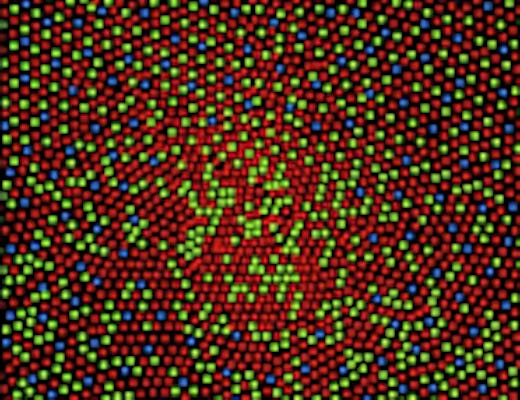Measurement Instruments for Luminous Intensity
Light measurements can be divided into a series of measurement principles, each of which is quantified according to different optical parameters. Photometric measurements, for example, are expressed according to the responses of the human eye. This is based on an averaged spectral sensitivity known as the V(λ)-luminosity function, which categorizes wavelengths of green-yellow light of approximately 555nm as the concentrated peak sensitivity of human vision in bright conditions.

Photometric measurements are concerned with the luminous power (lm), illuminance (lm/m2 or lux), luminance (cd/m2), and luminous intensity (cd) of a light source. In this article, we will explore luminous intensity in further detail, and explore some of the appropriate light measurement instruments for assessing the intensity of a lighting product.
What is Luminous Intensity?
Luminous intensity, often misinterpreted as brightness, is the quantity of wavelength-weighted power of a light emitted per unit solid-angle. It is expressed as a unit of candela (cd) and is measured according to the Vλ luminosity function. The luminous intensity of a light source is distinct from its luminous flux, which measures the power output according to Vλ of a light source in all directions, and is expressed in lumens (lm).
This distinction highlights the semantic difference between luminous flux and luminous intensity – the latter of which refers to the optical power output in a defined field of view. Luminous intensity is particularly important for measuring high-power light-emitting diodes (LEDs) and solid-state lighting (SSL) for domestic and commercial spotlights. Quantifying the optical output of a directional light source against an averaged human sensitivity is a critical process for development, manufacture, and quality control of commercial LEDs and SSL.
Measurement Instruments for Luminous Intensity
For optimized response, luminous intensity measurements are carried out in isolation without interference of ambient light. Measurement instrumentation is commonly used to acquire multiple photometric measurements to assess the broad optical characteristics of a light source. Photometers capable of carrying out luminous intensity measurements must be equipped with either a cosine corrector or an integrating sphere in 2π configuration. The first however is the most compact and thus most practical solution.
Cosine correctors acquire light across a 180° field of view with a Lambertian response and diffuse it, while integrating spheres reflect obtained optical signals around an internal cavity into a sensitive detector. Spectrophotometers can use either of these geometrical configurations to determine the luminous intensity of an LED or SSL product.
Luminous Intensity Measurements with Admesy
Admesy provides a substantial range of photometric measurement instruments and accessories for luminous intensity measurements of a range of commercial and professional lighting products. Depending on the need for measuring multiple parameters, Admesy has multiple options, providing fully-rounded analysis of the optical characteristics of lighting in throughout the production process.
Our measurement instruments capable of acquiring luminous intensity data when equipped with cosine corrector include:
- Neo series spectrometer;
- Astera series light meter.
If you would like any more information about performing luminous intensity measurements with Admesy products, please do not hesitate to contact us.

